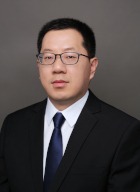São Paulo Adopts Biomethane in Bus Fleet
On Sept. 2, 2025, the biggest city in Americas with biggest bus fleet, started on the path to use of biomethane as fuel in the city’s public transport fleet and garbage collection vehicles. The initiative sets rules for fuel acquisition and introduces the gradual adoption of biomethane-powered vehicles. City officials emphasize that biomethane offers lower operating and acquisition costs compared to electric buses and avoids the need for large-scale charging infrastructure.





